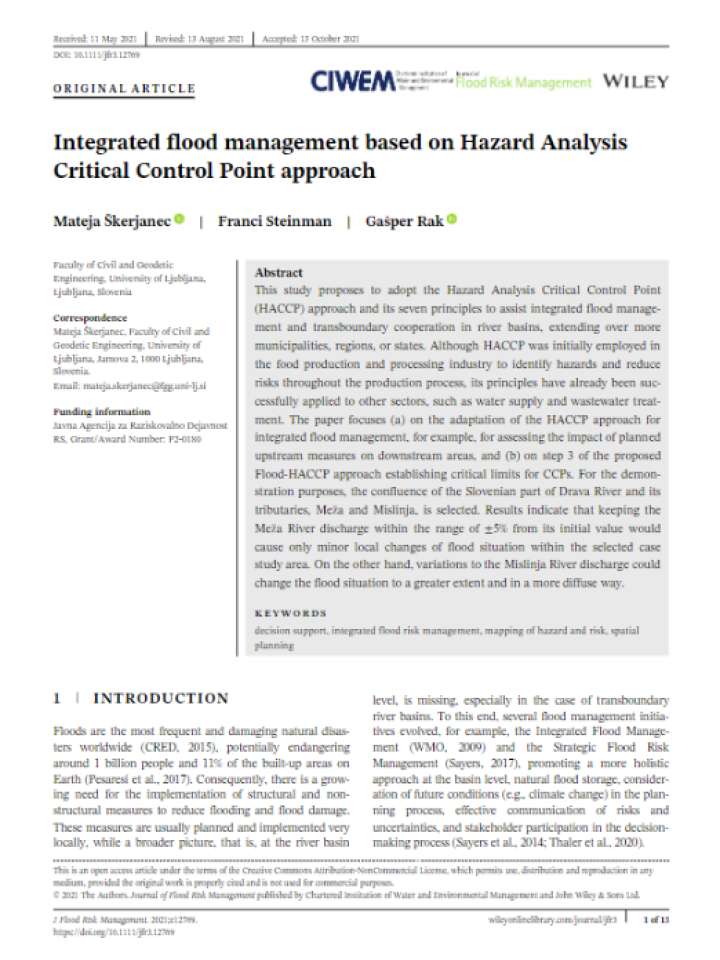Integrated flood management based on Hazard Analysis Critical Control Point approach
This study proposes to adopt the Hazard Analysis Critical Control Point (HACCP) approach and its seven principles to assist integrated flood management and transboundary cooperation in river basins, extending over more municipalities, regions, or states. Although HACCP was initially employed in the food production and processing industry to identify hazards and reduce risks throughout the production process, its principles have already been successfully applied to other sectors, such as water supply and wastewater treatment. The paper focuses (a) on the adaptation of the HACCP approach for integrated flood management, for example, for assessing the impact of planned upstream measures on downstream areas, and (b) on step 3 of the proposed Flood-HACCP approach establishing critical limits for critical control points (CCPs). For the demonstration purposes, the confluence of the Slovenian part of Drava River and its tributaries, Meža and Mislinja, is selected.
The results indicate that keeping the Meža River discharge within the range of ±5% from its initial value would cause only minor local changes of flood situation within the selected case study area. On the other hand, variations to the Mislinja River discharge could change the flood situation to a greater extent and in a more diffuse way. The municipalities, regions, or states can use available hydrological and hydraulic models that were developed for the determination of initial flood conditions, incorporated into the flood risk management plans, or they can set up new models.
Explore further

